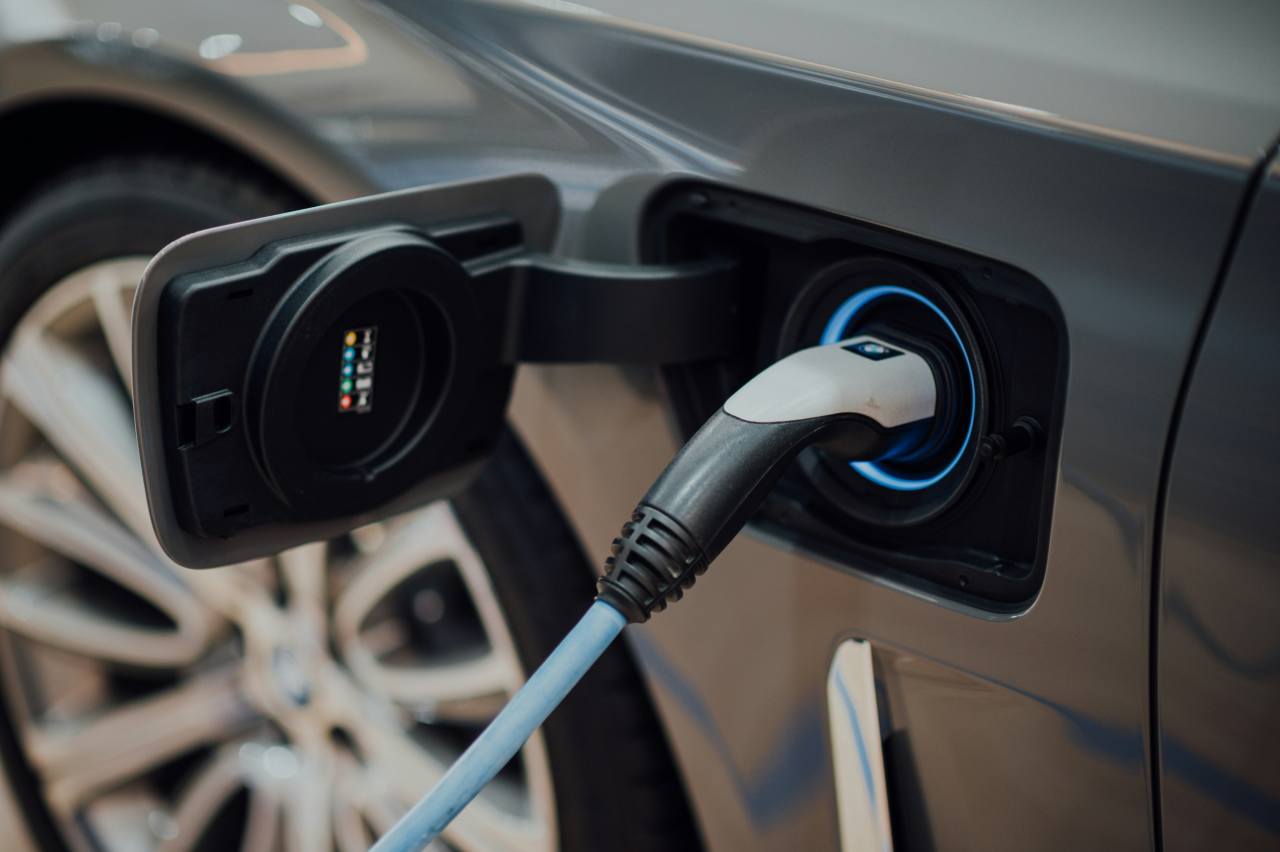The Polestar 3 has a really tough task ahead of it.
The other options around its price point in the large SUV space are cars like the electric BMW iX or even the (for now) petrol-powered Porsche Cayenne.
So the Polestar can’t just look good and feel good, it also has to drive… good.
Fortunately, on paper and after having reviewed well overseas, signs are good: plenty of power, stacks of features and a properly premium look.
It’s finally here, so we’re going to find out just how well it handles conditions here in Australia.
Polestar 3 2024: Long Range Dual Motor
| Engine Type | Not Applicable, 0.0L |
|---|---|
| Fuel Type | Electric |
| Fuel Efficiency | 0.0L/100km (combined) |
| Seating | 5 |
| Price From | $123,640 - $142,120 |
| Safety Rating |
|
Price and features – Does it represent good value for the price? What features does it come with? 8/10
8 / 10
Starting from $132,900 before on-roads for the 2024 Long Range Dual Motor, the Polestar 3 isn’t exactly a budget offering, but with a focus on design and its sustainability story, the brand says pre-orders here in Australia have been healthy so far.
The Launch Edition is what we’ve driven in Tassie, and it comes with a fairly generous stack of standard features that will later be options, including the Pilot Pack and Plus Pack.
As mentioned, the Long Range Dual Motor starts from $132,900, or you can fork out an extra $9000 for the Performance Pack at $141,900.
.jpg)
The Performance Pack also adds brake callipers, seat belts, and valve caps finished in Swedish gold as colour highlights.
From the 2025 model year, there will also be a Long Range Single Motor, starting from $118,420 with the Pilot Pack included at no extra cost.
The Pilot Pack includes lane centring, lane change assist, and surround-view cameras, though a LiDAR version with more capability will be available for $7500.
MY25 cars will remain similar in price as the launch cars, the Dual Motor at $132,720 and the Performance Pack at $144,420, but option packs will cost extra.
The Plus Pack will be a $9000 option, which includes the very impressive 25-speaker Bowers and Wilkins sound system, active road noise cancelation, a head-up display, an infrared windscreen, a heated steering wheel and rear seats, electric steering wheel adjustment, air quality control and soft-close doors.
A Nappa leather interior upgrade can be had for $7500, adding ventilation and massage functions to the front seats.
Other options include a $1700 wool interior, metallic paint for $2000, 1.3 megapixel LED headlights are $3000, and there’s also an electric fold-away tow bar that can be had for $2900 and can tow 2200 kg braked.
If you’re easily carried away when it comes to options boxes, check out the Polestar configurator - a few clicks for a highly optioned car and I was looking at more than $190,000 drive-away.
Without any options, the configurator returned a $154,396 drive-away for the Performance Pack version, so if value is your aim, get in while the Launch Editions are still around.
Design – Is there anything interesting about its design? 9/10
9 / 10
There’s plenty to talk about when it comes to the way the Polestar 3 looks, which its designers say was very deliberate. Speaking to us at the launch, Senior Exterior Designer Nahum Escobedo said the styling of the Polestar 3 was the result of a wish to avoid making the car look, in diplomatic terms, less like other electric cars that seek to maximise efficiency with a low drag coefficient.
The result is the Polestar 3 not being particularly ‘rounded off’ at the front (“like jelly beans, or like potatoes” Escobedo has told us in the past), but instead featuring an aerofoil that channels air along the front of the sunken bonnet and over the roof to a rear spoiler.
The aerofoil itself sits above the panel that would be part of a grille on an ICE car, instead housing the sensors and equipment that helps the Polestar’s safety features work. Behind that, the sunken bonnet creates a muscular ‘haunch’ over each of the front wheels.
The Polestar’s front being a little more upright and the shape of its headlights - a Swedish nod inspired by the idea of Thor’s hammer - makes the Polestar look more imposing or perhaps commanding than many other EVs, save for maybe the monolithic BMW iX.
.jpg)
But the Polestar also comes with some delicate details, for example the frameless side mirrors aren’t the usual bulky units, and the way they move when adjusted is thoughtful.
There are some thoughtful details inside, too, despite the fact it may seem fairly minimal inside, several of the materials in the Polestar seem to work nicely together rather than clashing.
The cabin seems to be very well put together from what we could tell, with almost no hard scratchy plastics even where it might appear there are some - like the door bottle holder spaces.

Practicality – How practical is its space and tech inside? 8/10
8 / 10
It doesn’t just look good - for something with seemingly as little going on as the Polestar, it all works quite well.
The balance between tidy design and practicality does have a couple of downsides, the main one being the lack of physical buttons diverts all vehicle and multimedia functions to the main touchscreen (which measures in at a generous 14.5 inches).
The software on the screen itself does run relatively smoothly, though needs an extra tap on occasion to register your intention properly, and Polestar has done a fine job making the menus easy to find and understand.
.jpg)
There are shortcuts to your most recently used menus, and most of the controls you’d need to use regularly and on the move are accessible by big, obvious ‘buttons’ on the screen.
A small downside is needing to use both the screen and the steering wheel buttons to adjust the mirrors or the steering wheel itself.
Storage is plentiful given how little there appears to be in the cabin in terms of obvious ‘furniture’ but cupholders, the charging pad, and a lower storage area are all placed nicely out of the way but easy to reach.
The seats, too, are a plus. The front seats are easy to adjust once you get used to the unusual control, and the shape and adjustability means you can be as snug or relaxed as you like within them.
The airy feel to the cabin isn’t just limited to the front, either.
When we landed in Tasmania for the launch, we managed to stack the back seat of a Polestar 3 with three car journalists for a relatively comfy trip from airport to hotel, but any longer than a short run and it would become a bit much.
It feels like the kind of space that would feel properly sizeable to two passengers though, even on a long drive.
The airy feel is helped by the fact there seems to be more width to the cabin than needed - plus the ambient lighting or just daylight through the sunroof. Even though it helps make the cabin feel bigger, the sunroof might be annoying to owners in summer as it’s not able to be closed off without a $330 clip-on shade.
Behind the rear seats, there’s 484 litres of space up to the seat-backs, or 597 litres up to the roof. With the seats folded down, there’s 1411 litres, plus there’s the 32L ‘frunk’ up front. Given it’s a large SUV, it feels like there could be more luggage room.
Of course, some of that space is taken up by the huge 111kWh battery, while none of it is taken up by a spare tyre - there is only a repair kit.
Under the bonnet – What are the key stats for its engine and transmission? 8/10
8 / 10
For now, the Polestar 3 comes along as an all-wheel-drive dual-motor EV, which in its standard Long Range variant outputs 360kW and 840Nm.
Pretty impressive figures, but a Performance Pack adds an additional 20kW and 70Nm, which adds up to the Polestar 3 having 380kW and 910Nm in its most powerful form.
The two versions can hit 100km/h in 4.7 and 5.0 seconds flat respectively, though both top out at 210km/h.
Later, a Single Motor Long Range variant will arrive for the 2025 model year. It’ll be rear-wheel drive and make 220kW, but will boast the longest range in the line-up: up to 650km.
.jpg)
Efficiency – What is its fuel consumption? What is its driving range? 7/10
7 / 10
Under WLTP testing, the Polestar 3 has a claimed range of up to 628km, though the Performance Pack reduces that to 561km.
Drawing from a huge 111kWh battery, the 3 should use between 19.8 to 21.8 kWh for every 100km driven, or 22.1 to 23.0 with the Performance Pack.
On test, the trip computer was returning much higher figures in both variants, averaging around 25.9kWh for the standard and 27kWh for the performance version
.jpg)
It’s worth noting a slower section of the drive loop returned a 22.4kWh reading, just above the claimed figure.
Day-to-day, getting close to the claimed range doesn't seem too unrealistic, but given the size of the battery and the weight of the car, it feels like there are more efficient uses of resources given Polestar's focus on sustainability. Polestar isn't alone in this, the BMW iX xDrive50 has a similar-sized 112kWh battery and a claimed range of 630km, but that doesn't mean a massive battery should be the only way to achieve a reasonable driving range into the future.
Driving – What's it like to drive? 9/10
9 / 10
On the road, it feels like the Polestar 3 is a promising sign for the brand (and even electric cars of this size in general).
Where big EVs have fallen prey to stiff and jolty suspension in the past to compensate for their mammoth kerb weights - in this case more than 2.5 tonnes - the Polestar feels more like a lighter SUV than it should.
Air suspension helps it out there, and a set of dampers that can be adjusted for stiffer sporty feel or for a more comfortable glide. The big wheels on the Performance variant seemed to show up the only struggles with road noise and some sharper bumps, but the ‘unique’ roads we’re treated to here in Australia seem to blame here. The 3 is quieter and smoother than anything this big and heavy should be, active noise cancelling helps here too.
Its steering, despite being adjustable via three modes, feels quite natural most of the time. It’s very light in its calmest setting, and works surprisingly well with the big Polestar, but if you do want the resistance it can offer for sharper driving that’s also an option.
More adjustment can be had in the power delivery, between a ‘range’ and ‘power’ pair of modes, the latter doing plenty to get the beast moving rather quickly (4.7 or 5.0 seconds as mentioned, depending on variant), but the calmer option is still very useable even at highway speeds and when overtaking.
The proper torque vectoring at the rear wheels helps out when tackling sharper corners, though eventually the limits of a car this heavy will show up, even with its very low centre of gravity.
Smaller things to note include the one-pedal driving setup in this car not really being proper one-pedal driving - the slow-down when taking your foot off the accelerator in even its most aggressive mode wouldn’t be enough to stop the car in some situations, even though you don’t really want it to be slamming the brakes for you.
On the other end of the software/hardware scale, the safety tech in the Polestar 3 is incredibly un-intrusive. The brand’s history with Volvo must be one of its greatest strengths when it comes to this, because even though nothing was deactivated, there were no unexpected or unwelcome reminders, chimes, or intervention of the steering.
Warranty & Safety Rating
Safety – What safety equipment is fitted? What is its safety rating? 8/10
8 / 10
There’s no ANCAP rating for the Polestar 3 yet, but given the brand’s association with Volvo and even Polestar’s own philosophy, it would be surprising if it fell short of top marks.
Five radars, five cameras, 12 ultrasonic sensors and plenty of software is in place to do the job of subtly keeping the car on the road safely, with Polestar Australia opting to make the Pilot Pack standard - adding more safety kit for no cost.
There are infrared cameras that track the driver’s eyes, motion-sensing radars to monitor the interior, pretty much every active safety function you could think of, plus nine airbags inside if the worst should occur.
.jpg)
Ownership – What warranty is offered? What are its service intervals? What are its running costs? 8/10
8 / 10
Polestar has a free service plan for the first five years or 100,000km of ownership, whichever comes first. As long as you don't plan on doing plenty of long road trips, this puts it in pretty good stead.
There’s also a five-year vehicle warranty and an eight-year or 160,000km warranty for the battery performance and material. A five-year warranty is fairly standard for the premium (especially Euro) end of the market, but is starting to fall behind volume brands which mostly offer seven years or more.
If the battery’s health drops below 70% of its original capacity within the first eight years during that time, the battery gets replaced at no cost to the customer.
.jpg)
Verdict
The Polestar 3 is a clear step up from the 2, and in its own segment there are electric rivals that could learn a lot from it.
While it’s not perfect - imagine if everyone wanted a car with a 111kWh battery for example - for a big plush SUV the Polestar drives as well as it looks.
The Launch Edition is certainly your best bet if you want the most bang for your buck, the Performance Pack is definitely not a requirement to get the most out of this car, though.
If Polestar is set to serve up more of this flavour, it seems like the future of the Swedish brand is headed in the right direction.
Note: CarsGuide attended this event as a guest of the manufacturer, with travel, accommodation and meals provided.






.jpg)
.jpg)
.jpg)
.jpg)
.jpg)
.jpg)
.jpg)
.jpg)
.jpg)
.jpg)
.jpg)
.jpg)
.jpg)
.jpg)
.jpg)
.jpg)
.jpg)
.jpg)
.jpg)
.jpg)
.jpg)
.jpg)
.jpg)
.jpg)
.jpg)
.jpg)
.jpg)
.jpg)
.jpg)
.jpg)
.jpg)
.jpg)
.jpg)
.jpg)
.jpg)
.jpg)
.jpg)
.jpg)
.jpg)
.jpg)
.jpg)
.jpg)
.jpg)
.jpg)
.jpg)
.jpg)
.jpg)
.jpg)
.jpg)
.jpg)
.jpg)
.jpg)
.jpg)
.jpg)
.jpg)
.jpg)
.jpg)
.jpg)
.jpg)
.jpg)
.jpg)
.jpg)
.jpg)
.jpg)
.jpg)
.jpg)
.jpg)
.jpg)
.jpg)
.jpg)
.jpg)
.jpg)
.jpg)
.jpg)
.jpg)
.jpg)
.jpg)
.jpg)
.jpg)
.jpg)
.jpg)
.jpg)
.jpg)
.jpg)
.jpg)
.jpg)
.jpg)
.jpg)
.jpg)
.jpg)
.jpg)
.jpg)
.jpg)
.jpg)
.jpg)
.jpg)
.jpg)
.jpg)
.jpg)
.jpg)
.jpg)
.jpg)
.jpg)
.jpg)
.jpg)


.jpg)

































.jpg)

.jpg)



